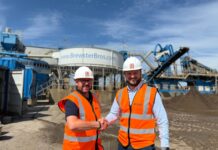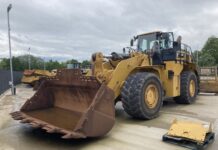IN a world first, the oldest, most polluting bulldozers, diggers and other building site machinery are to be targeted under new plans by London Mayor Boris Johnson to improve the capital’s air quality.
New planning rules will require construction equipment to meet standards for both particulates (PM10) and nitrogen oxides (NOx), cutting emissions by approximately 40 per cent by 2020. Equipment over 10 years old will need to replaced or retrofitted on all developments in central London and major developments in outer London (10 homes or more or 1,000 sq foot in other developments), with occasional exemptions for specialist construction machinery. They will also improve the control of dust from construction and demolition activity which can cause significant health impacts and is responsible for up to 15 per cent of air pollutant emissions in London.
Construction machinery is often replaced less frequently compared to similar emitting engines like cars or vans. Air pollutants coming from dust-generating activities on site, for example breaking-up of materials and the movement of soil, can cause significant nuisance to local residents unless properly managed.
The Mayor’s new mandatory Supplementary Planning Guidance (SPG) addresses this by reducing emissions of dust, particulates (PM10 and PM2.5) from construction sites and managing emissions of nitrogen oxides (NOx) from machinery. While other cities and countries have introduced emission requirements for construction machinery before, this is the first time any city has introduced rules for both particulate and NOx emissions.
Boris Johnson said, “By replacing the oldest and most polluting bulldozers and machinery on building sites we can greatly reduce harmful emissions and boost our air quality. We’ve all walked past construction sites and seen thick clouds of dust generated from equipment that simply hasn’t been updated or replaced in decades.”
Dr Claire Holman from the Institute of Air Quality Management said, “This is an important step in reducing emissions from demolition and construction sites that are both annoying and damaging to human health. These standards have rightly taken into account the impact on air quality and will be a key part of the planning process of new developments.”









